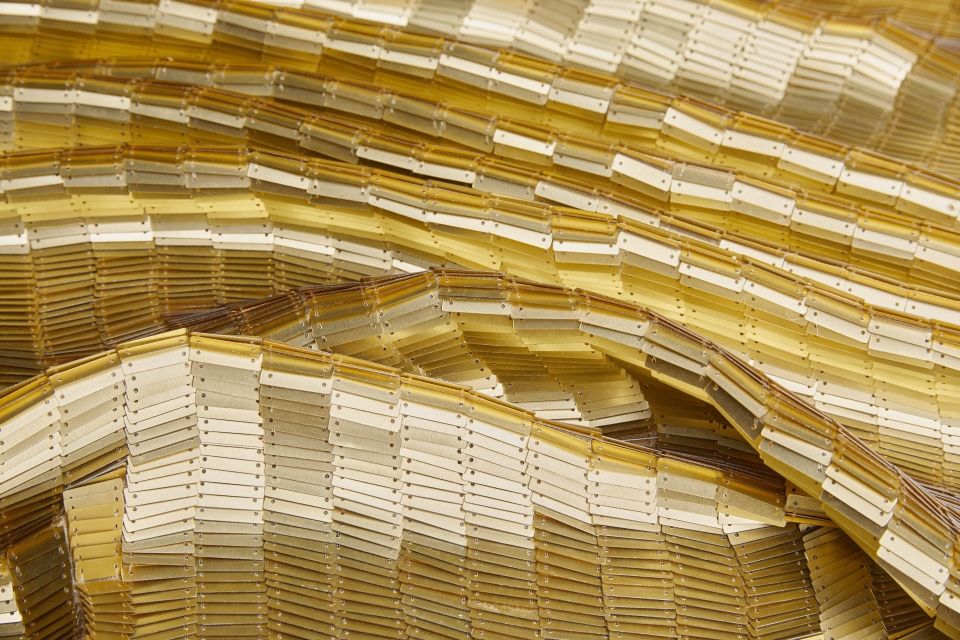We use cookies to make your experience better. To comply with the new e-Privacy directive, we need to ask for your consent to set the cookies. Learn more.
Silk Chiffon/Georgette Fabric
Silk chiffon is semi-transparent, soft and smooth, whereas silk georgette has more texture due to its crepe-like weave. They are very light and drape beautifully, creating a flowing, ethereal effect. We also have Beaded Silk Chiffon Fabric, Plain Silk Chiffon Fabric and even Printed Silk Chiffon Fabric to choose from. For more details about usage, maintenance and care of Silk Chiffon, click here.
Silk Chiffon/Georgette - Everything you need to know
Silk chiffon is a lightweight, sheer fabric known for its delicate and airy quality. Here are some key points you should know before using it:
Characteristics of Silk Chiffon:
-
Texture and Appearance:
- Sheer and Transparent: Silk chiffon is semi-transparent and has a slightly rough texture due to its crepe-like weave.
- Lightweight and Airy: The fabric is very light and drapes beautifully, creating a flowing, ethereal effect.
- Shimmery and Matte Finish: It can have a soft shimmer but also comes in matte finishes, depending on the weave and dyeing process.
-
Fiber Content:
- Made from silk fibers, it is natural and has a luxurious feel.
- Silk chiffon can also be blended with other fibers like polyester to reduce cost and increase durability.
Working with Silk Chiffon:
-
Handling:
- Delicate: It’s very delicate and prone to fraying, so handle with care.
- Pins and Clips: Use fine pins or fabric clips to avoid leaving marks or holes.
-
Cutting:
- Sharp Tools: Use sharp scissors or a rotary cutter to achieve clean edges.
- Stabilizing: Place tissue paper under the fabric while cutting to prevent shifting and stretching.
-
Sewing:
- Needles: Use a fine needle (size 60/8 or 70/10) to prevent snags and runs.
- Stitch Length: Opt for a shorter stitch length (1.5-2 mm) to avoid puckering.
- Seams: French seams or rolled hems are ideal for finishing as they prevent fraying and give a neat appearance.
-
Pressing:
- Low Heat: Use a low heat setting and place a pressing cloth between the iron and fabric to prevent damage.
- Steaming: Steaming is preferable to avoid direct heat.
Maintenance:
-
Cleaning:
- Dry Cleaning: Recommended to maintain the fabric’s integrity and prevent damage.
- Hand Washing: If hand washing, use cold water and mild detergent, and avoid wringing or twisting the fabric.
-
Storing:
- Hanging: Store garments made of silk chiffon by hanging them to avoid wrinkles.
- Cool, Dry Place: Keep in a cool, dry place away from direct sunlight to prevent discoloration.
Usage:
-
Fashion:
- Evening Wear: Popular for evening gowns, bridal wear, and special occasion dresses due to its elegant drape.
- Blouses and Scarves: Also used for lightweight blouses, scarves, and layering pieces.
-
Home Décor:
- Curtains and Drapes: Sometimes used in home décor for curtains and drapes, adding a touch of luxury.
Challenges:
- Slipperiness: Silk chiffon is slippery and can be challenging to work with, requiring patience and precision.
- Fraying: Edges can fray easily, so finishing seams properly is crucial.
- Cost: Pure silk chiffon can be expensive compared to synthetic alternatives.
Understanding these characteristics and handling techniques will help you effectively use silk chiffon in your sewing projects, ensuring beautiful and professional-looking results.
Why is Silk Fabric so great?
Silk fabric's absorbency makes it extremely comfortable on your body while active and also in warm weather. Silk fabric's low conductivity keeps you warm in the cold. It does this by keeping warm air close to the skin. Silk fabric is very versatile and is used in many styles of clothing including high fashion, couture, lingerie, shirts, blouses, formal dresses, pyjamas and more. Silk's attractive drape and lustre makes it ideal for stunning yet comfortable home furnishings including cushions, wall coverings and curtains. Types of silk fabric include Silk Dupion, Silk Satin and Silk Velvet.
























